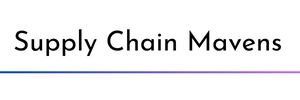"I went to a garden party to reminisce with my old friends." - Rick Nelson
To survive in the post-Covid world, supply chain management must become increasingly creative. This now extends to international shipping. I recently read an article in the New York Times where a company was having difficulty shipping their dehumidifiers from their manufacturer in China to the United States. The cost per container quoted was over eight times their shipping cost pre-Covid. Then came Amazon to the rescue. The e-commerce leviathan had taken yet another page from Henry Ford’s vertical integration playbook. Amazon, along with the likes of Walmart, The Home Depot, Costco, Target, and Ikea are now chartering entire ships to import their products. Charters are now being used not just by the mega retailers and e-tailers but also by some of the larger furniture stores to ship material from Asia. This practice began in earnest at the start of the pandemic and is expected to continue and even expand in 2022.
Container ship chartering is based on what is known in international shipping circles as charter parties. Originally limited to bulk commodities such as oil, ores, grains, sand, cement, etc., charter parties for container ships are becoming much more common. Most container charters are small, around 1,000 containers per ship. And while they are expensive, they allow the shipper more flexibility as they can bypass the bottlenecks at the larger ports by loading and unloading at smaller, less congested ones. This allows goods to be delivered in time for the holiday season. Overall, the amount of goods shipped in this manner is small, but if it keeps in stock rates high, it can save a company’s season.
One unfortunate drawback to charters is that they are only practical for the largest players. Smaller organizations just don’t have the resources at their disposal unless they can leverage their relationship with a large retailer like Amazon, Target, or Walmart. Of course, even those that can afford to charter container ships may ultimately find that they are playing with fire. Charters are not “one and done” affairs. They have no spot market. Most charters take time to arrange, and the relationship is likely to last for several years and involve multiple ships.
So, what happens when the music stops, and demand suddenly drops? Is this another example of the bullwhip effect? Could this be a long-term solution to a short-term problem?
Compare the increase of container charters to what’s already happened to many bicycle manufacturers and retailers. What was once a seller’s market for bicycles has changed radically. In 2020 many bicycle stores had people wrapped around the block selling all the bikes they could get when they could get them. Others took orders for high-end bikes only that would be delivered months later and stayed incredibly busy making bicycle repairs. Today many bike stores are awash with unsold inventory as the bullwhip cracks and supply again exceeds demand. Markdowns are increasing as customers’ tastes change yet again and people are willing to venture out and they shift their spending from home goods to more social pursuits such as going to restaurants, taking a trip, and once again attending sporting events. The demand and supply cycle is now having negative effects on some of the very industries that it benefited just a year or two ago. It will be interesting to see who the winners and losers are, as charter parties run their cycle and the bullwhip cracks yet again.
Gary welcomes your comments and feedback. You can email him at gary@supplychainmavens.net.

